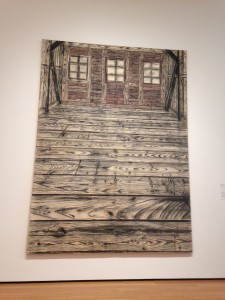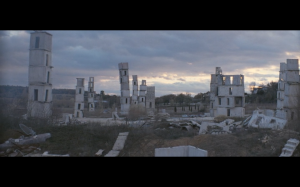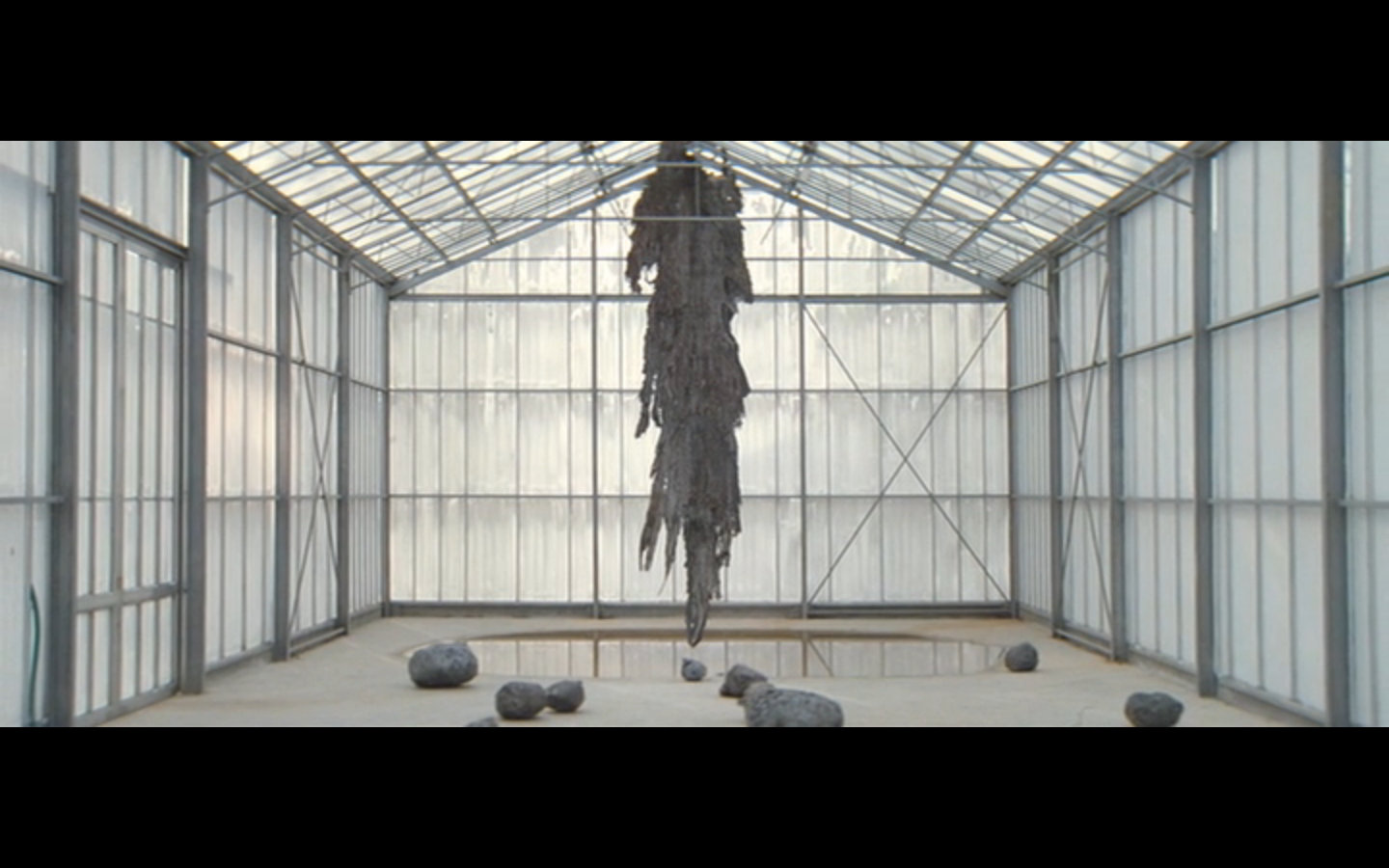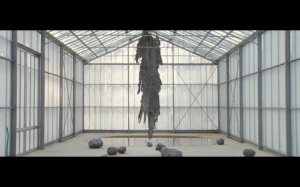Throughout July and August, I have been doing a lot of reading and thinking about Anselm Kiefer and ghostlinesses of identity, place, art object, memory, and history. There are many ghosts haunting my project and my ability to write about it, and to write in general. However, several authors and films have encouraged me to speak with those ghosts, and to attempt to understand how Kiefer does so in his work. In addition to encountering ghosts, I have thought about angels, mythic beings, and spectral figures of history—many of these figures and their symbols resonate in Kiefer’s work: Lilith, angel wings, Margarethe and Shulamith, the ghost of the Third Reich and loss of the father, a Führer. Kiefer also employs referents of haunting in haunted objects—burned books, shattered glass, hair, ash, heavy lead, straw, starched but trampled dresses.

I ended the last post by leaving some questions about haunting’s beginning and ending—if that is possible, if this language even applies to the ghostly, where it begins if it does, where it reaches out to, where and how it lives. I have since come to believe that the language we usually use when talking about time is bankrupt when it comes to haunting, even if that haunting is done by an angel, a place, a painting, ourselves, history + histories, or a symbol.
Several sources have helped me through this thinking— including but not limited to Jacques Derrida’s Specters of Marx, Wim Wenders’ beautiful film Wings of Desire, Avery Gordon’s Ghostly Matters, Walter Benjamin’s “Theses on the Philosophy of History”, the art of Joseph Beuys, Georg Baselitz, and Guillermo Kuitca, and Sophie Fiennes’ lyrical documentary about Anselm Kiefer, Over Your Cities Grass Will Grow. Working with these sources has allowed me to begin to think about how haunting is created and creates, is ignored, is destroyed and destroys, alchemizes, and how it is carried by us, if it exists apart from the realm of the human—if the human is necessary when it comes to haunting (we will never know but Kiefer is trying to understand this). My wonderful mentor Josh Shirkey brought up some important questions when he reviewed my post–how do I differentiate ghosts and angels? Does Kiefer? What about Benjamin’s “Angel of History”? What is the significance of Kiefer so often rendering female figures?
Trailers for Over Your Cities Grass Will Grow and Wings of Desire:
As I wrote this I began by outlining Kiefer’s interest in destruction as a creative force and as what will remain in the end of history. I also began to write about Derrida’s idea of haunting operating on a circular conception of time (hence my belief that haunting does not begin or end). I began to write about Wim Wenders’ film and the main character—an angel—and his monologue that seamlessly interweaves thoughts on the murky beginning of time and how the Nachgeborenen (Germans born after the war, like Kiefer) keep their haunting and haunted identities bound up tightly, as the camera alternates between scenes of empty German forests and Berlin during the Cold War, and historical footage of it being bombed out during the Second World War. I began to write about the angel and other revenant figures’ desires to become human, primarily in order to speak with them or touch them. At this point I had reached far too big of a word count, so I’m leaving that writing for the essay itself, but figured I’d comprise my post of these thoughts beginning.

From here I plan to do even more reading (Sebald’s Rings of Saturn, Derrida’s Cinders, Adorno, and more), writing (of poetry and theory), and take a trip to the Massachusetts MOCA, which houses the largest installation of Kiefer’s work in America. I’m excited to see what comes of this work, and despite my frustrations with the project being inherently speculative, if not entirely unanswerable, I am hopeful that I can convey Kiefer as a visual critical theorist whose work with haunting and destruction crafts dialogues that most art work cannot.

